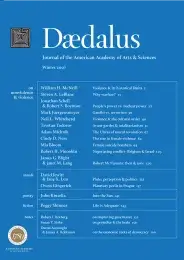The rise in female violence
Whether encountered in the mythos of the Madonna or in the image of the dutiful wife and obedient daughter, females have been regarded over the ages as having a special capacity to reinstate balance where it has been undermined by the excesses of men. While exceptions to this stereotype are easily found throughout history–the young Joan of Arc wreaked havoc against the English for a brief period, and Catherine the Great led the Russian army in many victorious campaigns–women have been celebrated chiefly for their ability to give and nurture life, not their ability to take it away.
It is this hallowed view of feminine nature, evident across cultures, and the extraordinary inner strength associated with it that informed Gandhi’s ideas about womanhood and led him to envision women playing a special role in carrying out his project of satyagraha (the search for truth) based on his doctrine of ahisma (nonviolence). For Gandhi, ahisma was the only viable road, politically or spiritually, upon which to challenge and transform the moral recalcitrance of British rule in India and the injustices that flowed from it; essentially, ahisma was a counterforce powerful enough to check blatant aggression without responding to it in kind. Gandhi fully believed that peace came about by changing the heart of one’s adversary through moral, not physical, force.
Gandhi’s early experiences with satyagraha helped shape his thinking about the relationship of men and women to violence. The picketing of liquor and foreign clothes shops in 1921, though successful in achieving many of its goals, was in the end a failure in Gandhi’s eyes because the crowd (decidedly male), trained for civil disobedience, instead turned violent. Gandhi’s writings of the time suggest that the incident convinced him that men lacked the discipline to carry out nonviolent protest. He saw men as by nature prone to arrogance, easily angered, and thus ill-suited to sustain insult without retaliating. If men came to exercise ahisma, he believed, they only did so by traversing “a laborious analytical process,”1 whereas women, given their tendency “toward service and sacrifice,” came to it “naturally and intuitively.”2 . . .
To read the full essay, access the PDF of the volume.
